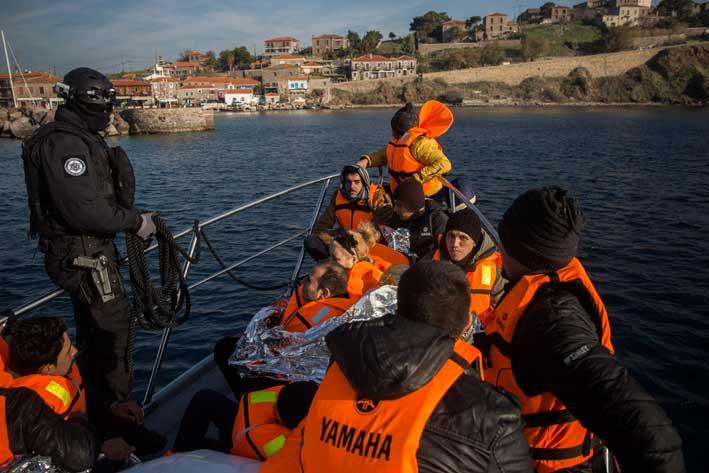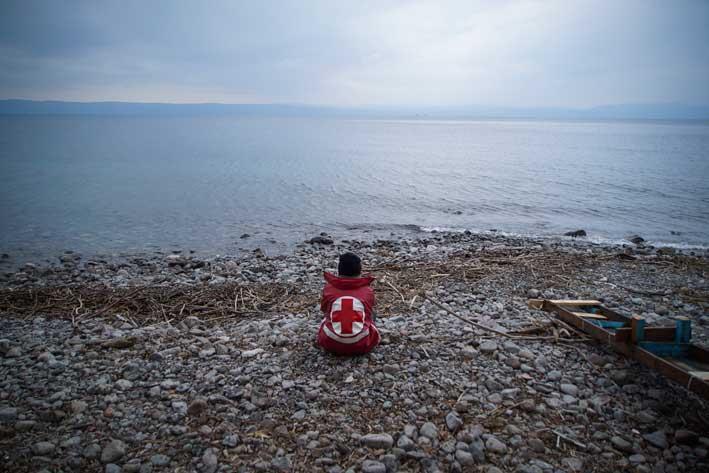Inflatable rubber boats being used by Libya’s people-smugglers are being imported from China and being transhipped to Libya through Malta and Turkey, according to an EU classified document leaked by WikiLeaks this week.
The report, entitled EUNAVFOR MED- Operation Sophia, is a status report on the first six months of the EU military-led campaign to stem the wave of refugees coming to Europe from Africa.
According to the report, inflatable boats are being used in two-thirds of human smuggling cases and wooden boats in the remaining third.
The report states: “Reports of rubber boats being imported from China and transhipped in Malta and Turkey are supported by a recent interception by Maltese Customs officers of 20 packaged rubber boats in a container destined for Misrata, Libya. As there are no legal grounds for holding such shipments, it was released for delivery to its destination.”

According to intelligence sources cited by the report, the wooden boats used are purchased from Libyan fishermen or imported from Tunisia and Egypt. EUNAVFOR MED says that, within its capabilities, it is monitoring the supply routes for these boats, but no evidence has been obtained to confirm this supply method beyond any reasonable doubt.
Wooden boats are mainly used for migrant smuggling to the west of Tripoli, and rubber boats are more common to the east of Tripoli. Wooden boats are more valuable than rubber dinghies because they can carry more people, hence generate more profit for smugglers, and are more resilient to bad weather and can be re-used if recovered by smugglers.
However, the report states, following operation SOPHIA entering into Phase 2A (High Seas), smugglers can no longer recover smuggling vessels on the high seas, effectively rendering them a less economic option for the smuggling business and thereby hampering it.

Social media recruitment
Migrants are recruited via social media, coaxers or by travel agent services run by smuggling networks outside Libya, according to the report, which then explains how. In the build-up to a launch, the would-be migrants are gathered in safe houses in areas a few kilometres from the beach, where they stay for a period ranging from days to months.
“Normally, within a day of the launch, the smugglers take the migrants in groups to a staging area close to the beach. This often necessitates passing through contested areas, requiring the smugglers to use escorts or pay off check-points. The staging areas are most likely where the final payment is made and where – according to reports – a system of tickets and boarding cards is used to facilitate the continuing process. At around midnight, the migrants are taken to the beach to board the vessels.

The smugglers’ business worth up to €300 million a year
In Libya, according to the report, the vast majority of departures take place from the Tripolitania area. The migrant smuggling business remains a very profitable industry for Libya, and is assessed by the report to generate an annual revenue of €250 million to €300 million. In some cases this may be over 50 per cent of the revenue for some of the towns in Tripolitania.
Analysis has shown that the smuggling business model in Libya is dependent on three vital conditions:
(1) the inflow of migrants seeking to use the central Mediterranean route;
(2) the ability to operate unhampered by militias, rival groups or the authorities; and
(3) the ability to provide transport to Europe or to merchant or military rescue vessels.
In the area west of Tripoli, in particular in the smuggling hub of Zuwarah, smuggling activities have significantly reduced since the beginning of September. A number of contributing factors have been identified, including rising tension between local militias of GNC and HOR affiliation and fighting along the coastal area between Tripoli and Zuwarah, with several key locations and roads captured and re-captured. This has reduced the freedom of movement and rendered smuggling activities difficult. The bodies washed ashore in Zuwarah, following a mass drowning incident off its shores on 27 August, reportedly sparked protests by the citizens and counter-smuggling action on the part of the authorities, showing for the first time the will and capability to fight the criminal organisations. However, given the well-established smuggling networks in the city, it is likely that the smugglers are able to maintain some revenue while relocating the smuggling activities out of town.

The Central Mediterranean Route
According to the report, between January and December last year 154,725 people arrived in Italy via the central Mediterranean route. The vast majority of these – 91 per cent – left from Libya, exploiting the nation’s political instability and inability to control its territory and borders.
Eight per cent of the migrants arrived from Egypt, using mother ships to which migrants are ferried from the western Egyptian and eastern Libyan coastline before proceeding to Europe. A small number of migrants on this route depart from Tunisia, Turkey and Greece – in the latter case as a secondary movement.
On the central Mediterranean route, the vast majority of smuggling activities continue to take place in what is called “the Lampedusa triangle” identified by the ports of Zuwarah and Misrata in the Tripolitania coastline and the apex centred on the Italian island of Lampedusa. SOLAS (Safety Of Life At Sea) action continues to be concentrated on the first 20 to 40 nautical miles outside Libyan Territorial waters. To this should be added the migrant flow arriving from Egypt, having increased substantially since July.
The report, written by Operation Commander Rear Admiral Enrico Credendino of the Italian Navy for the EU’s Military Committee and Political and Security Committee, concludes: “While still much needs to be done to disrupt the smugglers’ business model, EUNAVFOR MED has nonetheless achieved significant results in its first six months. In this respect, the main message to the international community is that the EU is capable of launching a military operation in record time, displaying a strong resolve and remarkable unity of intent, as demonstrated by the 22 member states participating in the operation.”